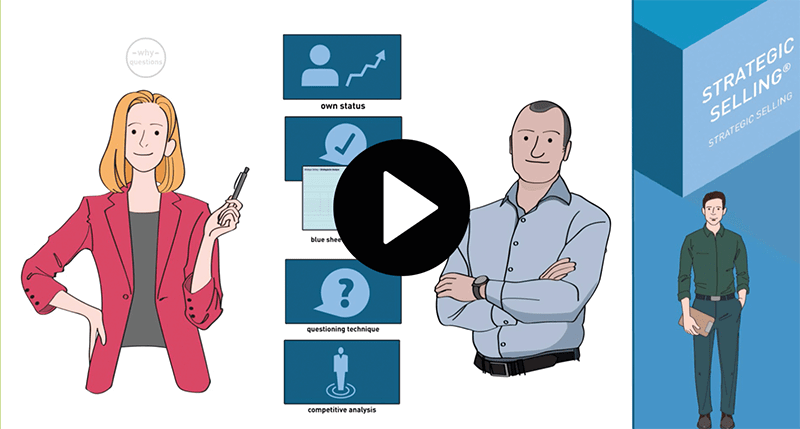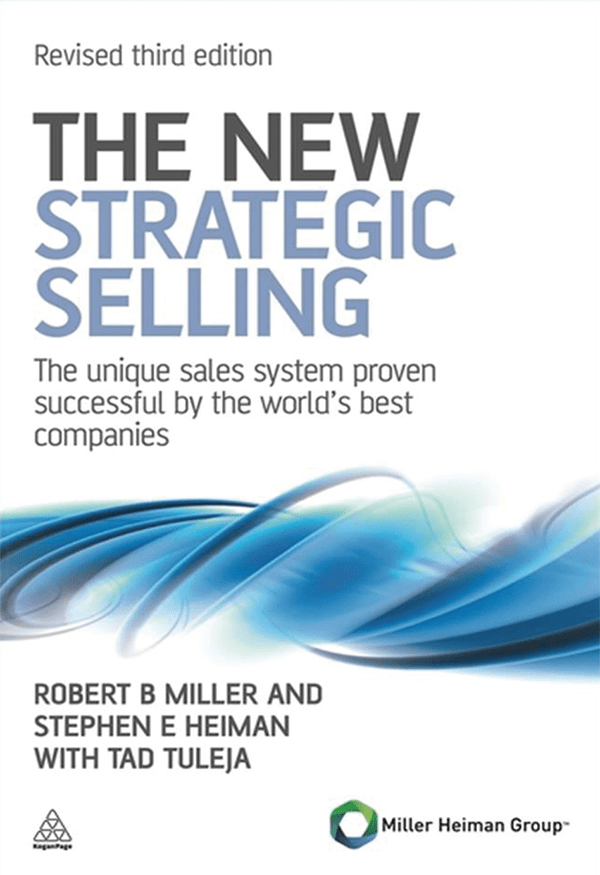Spotlight on Strategic Selling
10th September 2019 | Bob Apollo
In the previous edition of the International Journal of Sales Transformation, I summarised some of the key aspects of the Sandler Selling System. In the second of my series of articles on today’s leading sales methodologies, I want to turn to another long-established approach: Strategic Selling® from the Miller Heiman Group.
The Strategic Selling methodology is particularly effective in complex B2B sales environments with large decision-making groups and often lengthy and convoluted buying decision journeys. It helps salespeople to break down complex situations into manageable components, and to focus on developing mutually beneficial relationships with their clients.
It would take more than a short article to do full justice to the methodology, so I’m going to selectively highlight a few of the concepts that have proven to be particularly useful over the years. Many of them – although they might have appeared to be revolutionary when first introduced – have now become recognised as mainstream thinking.
Ideal customer profile
Strategic Selling was one of the first methodologies to acknowledge the importance of establishing an “ideal customer profile”, and to recognise that raw demographics (such as company size, sector and location) are an incomplete and inadequate way of describing the most important characteristics of our most valuable existing and potential customers.
The concept of “buyer personas” has become commonplace in B2B marketing, and it’s interesting to note that the authors of Strategic Selling introduced the concept of organisational psychographics (in other words, organisational personalities) into the mix when thinking about our ideal customers.
Every successful proposal needs to be able to answer the question ‘what’s in it for the company, for my department, and for my own personal goals?’
They pointed out something that effective salespeople have often instinctively recognised – that vendor and customer company cultures have a powerful influence on the likelihood that they will agree to do business with each other. But, of course, these factors only become obvious when we are in active dialogue with each other.
Buying influences
Strategic Selling recognises that any large and complex buying decision will inevitably involve many different stakeholders, and that these stakeholders will have widely varying degrees of influence over the decision-making process. The methodology recognises four particularly important roles: economic buyers, user buyers, technical buyers, and coaches.
In this model, the economic buyer is responsible for giving the final approval for the purchase of your product or service. This can be a single individual or, as is increasingly common nowadays, a board or a selection committee. But even when a group decision is involved, the methodology encourages us to seek out the most influential individual.
The second buyer influence type is the user buyer. These are the people who will actually use (or supervise the use of) your solution. Their focus is on the job to be done, and the problem to be solved. Their future success may hinge on the effectiveness of your offering, and they often have significant input into the detailed solution requirements.
The third buyer influence type is the technical buyer. These are the people who determine whether any given solution is a good fit for the customer’s environment. The term “technical buyer” can be a little misleading, since it includes not only the obvious IT experts, but also legal, procurement, and other specialists who often have the potential power of veto.
The fourth and final key buying influence type is the coach. This is someone within the customer organisation who is willing to help guide you in your sales strategy. As the authors point out, the first three roles already exist, but your coach (and there may be more than one) needs to be identified and developed.
In complex environments, you will often find multiple people in each of these key role types, but it would be very dangerous (and very unusual) for them to have the same level of influence over the sale. That’s why using a buying influences chart is a simple but effective way of identifying and assessing each of the players.
Want to know more?
Here are some useful places to start: To view a short video from Miller Heiman, visit: https://vimeo.com/251290475


Read The New Strategic Selling: The Unique Sales System Proven Successful by the World’s Best Companies (revised third edition) by Robert B Miller, Stephen E Heiman and Tad Tuleja, published by Kogan Page, June 2011.
Win results
Another important concept is the idea of win results – best summarised as “Companies get results, but only people win.” In other words, we need to show how both the organisation and the key buying influences will benefit as a result of embracing our solution.
Results tend to be corporate, expressed as the impact on some important business process or metric. These will often be a mixture of both economic and non-economic measures, such as customer satisfaction, market reputation and/or the ability to attract and retain top talent.
Wins, on the other hand, are personal, often intangible and hard to quantify, but the belief that a decision will result in a win is often critical to getting the support of key stakeholders. That’s why every successful proposal needs to be able to answer the question “what’s in it for the company, for my department, and for my own personal goals?”
Response modes
People and the organisations they represent are most likely to buy when there is a significant gap between their current situation and their desired future outcome. Strategic Selling identifies four potential “response modes”: growth, trouble, even keel, and over-confident. The first two often indicate potential current opportunity, but the others suggest that an immediate sale opportunity may be difficult.
In both growth and trouble mode, the prospect already perceives that there is a significant mismatch between where they are today and where they would like to be. The chances of change are at their highest when these gaps exist at both the company and the individual buyer influence level.
And, reflecting the work of Daniel Kahneman, the methodology suggests that the avoidance of trouble can be an even more powerful catalyst of change than the pursuit of growth. Of course, if we can combine the two, our chances that the prospect will act and that we will win their business are even higher.
Even keel and over-confident response modes are much more problematic. When there is little perceived difference between their current situation and any desired future state, the prospect is likely to stick with the status quo. But if their over-confidence proves unjustified, we may be able to successfully change their perceptions (and that, of course, is where blending Strategic Selling with a Challenger Selling® approach could prove invaluable).
Structured approach
The above concepts are supported by a structured approach that captures key opportunity-related information into “blue sheets” providing a single-page view of the most important information pertaining to any given sales opportunity, such as your single sales objective, current position, competitive landscape, ideal customer profile, buying influencers, win-results, current position, and potential and best actions.
The great advantage of this single summary view is that it quickly makes obvious what you know and don’t know, and what you have done and have not yet done in the context of your overall opportunity strategy. It offers an incredibly powerful perspective.
In conclusion
Although the Strategic Selling methodology has been around for decades, it anticipated many of today’s customer-centric approaches and has been regularly refined to take account of modern buying behaviours. If you have a complex sales environment, its core concepts are definitely worth serious consideration.
1 Israeli-American Nobel prize-winning psychologist and economist Daniel Kahneman is professor emeritus of psychology and public affairs at Princeton University’s Woodrow Wilson School. He is notable for his work on the psychology of judgment and decision-making, as well as behavioural economics, and his empirical findings challenge the assumption of human rationality prevailing in modern economic theory.


